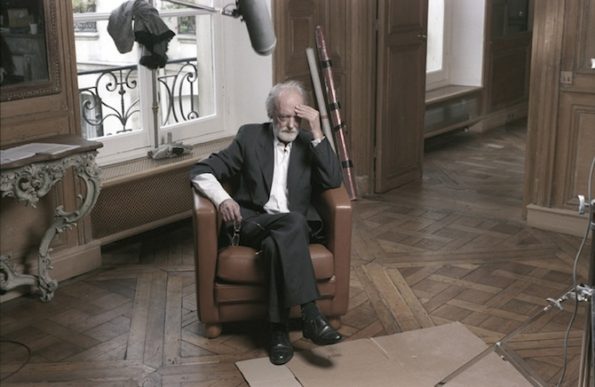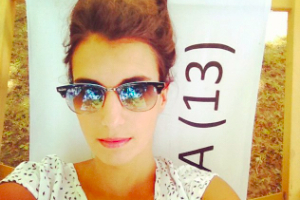Search
To search for an exact match, type the word or phrase you want in quotation marks.
A*DESK has been offering since 2002 contents about criticism and contemporary art. A*DESK has become consolidated thanks to all those who have believed in the project, all those who have followed us, debating, participating and collaborating. Many people have collaborated with A*DESK, and continue to do so. Their efforts, knowledge and belief in the project are what make it grow internationally. At A*DESK we have also generated work for over one hundred professionals in culture, from small collaborations with reviews and classes, to more prolonged and intense collaborations.
At A*DESK we believe in the need for free and universal access to culture and knowledge. We want to carry on being independent, remaining open to more ideas and opinions. If you believe in A*DESK, we need your backing to be able to continue. You can now participate in the project by supporting it. You can choose how much you want to contribute to the project.
You can decide how much you want to bring to the project.

If one goes up close to one of the photographs in the series “Newsstands” (2007-) in the Gerard Byrne exhibition that is currently at the Whitechapel in London, one can read on the label a figure that refers to an amount of time that has past. For example “Eleven months and twenty-one days ago”. This temporal reference indicates that the photograph was taken eleven months and twenty-one days ago. The fact that the title of the image is tied to the day the photograph was taken reveals that the notion of temporality adheres here, not just to the title of the work but also, to where it is shown. The idea of relative temporality is strongly linked to the work of Gerard Byrne, as are theatricality, literature, or masculinity, to name just a few of the multiple characteristics encompassed by the encyclopaedic work of the artist.
Born in Dublin in 1969, Gerard Byrne carries a hefty career on his shoulders. His projects have been exhibited in important museums across the world, he has represented his country in the Venice Biennale on several occasions and last year showed one of the most acclaimed pieces in dOCUMENTA(13): “A man and a woman make love” (2012), that is also in this exhibition. Byrne’s work is known for revisiting moments of the past and recreating them in the present and to do this he uses, as his resource, interviews extracted from magazines like National Geographic, Playboy or La Révolution surréaliste. These conversations are transformed into scripts that reconstruct events from popular culture with a very particular approach that is at times hieratic and intentionally artificial.
The room with which the show begins contains an installation of modular structures that occupy a large part of the space. These walls function as screens, which at the same time reinforce their sculptural character by the force of their presence. The first film presented is “A man and a woman make love” (2012), a recreation in a televised format (audience included) of one of the first conversations about sex and eroticism carried out by the surrealist group, led by André Breton, in 1928. The five screens that encompass the space show how the actors, representing amongst others Breton, Tanguy and Queneau, talk openly about their fantasies and sexual fetishes. The fact that we know this conversation was published in “La Révolution surréaliste” doesn’t seem to elude the masculinity of their assertions.
As opposed to the theatrical, almost parodied, register, of the aforementioned film, “Homme à Femmes” (2004) featuring the Frenchman, Michel Debrand, shows a brilliant interpretation of Jean Paul Sartre. During this conversation, the philosopher talks about his relationships with women, in particular with the feminist Simone de Beauvoir with whom he maintained a long history of polygamous love. He openly accepts that, despite his ugliness, women from a very early age clustered around him and doesn’t hesitate to say that, despite its inherent machismo, the idea of assuming the dependency of a woman in any terms, such as for example, the economic, had always seduced him.
The third and last film in this space is “A thing is a hole in a thing it is not” (2010). This video installation, unlike the previous two, develops if it’s possible, a more complex relationship with the spectator through the configuration of filmic editions within the space. In this case the projections don’t show various points of view of one and the same reconstruction, so much as they combine different events in the five screens, forcing the spectator to move continuously through the room. The series of videos on display, bring together key moments in the history of art of the sixties, from the performatic sculpture by Robert Morris “Column” (1961), to a radio interview between Donald Judd, Dan Flavin and Frank Stella. Undoubtedly, one of the readings that can be made of this installation is a reflection on the filmic language and the capacity for codification that the spectator develops.
Other films presented in this first retrospective of the artist in the British capital are those extracted from conversations published in the magazine “Playboy”. These are, “Why it’s time for Imperial, again” (1998-2002), an interpretation of a chat between Frank Sinatra and the director of Chrysler; “New sexual lifestyles” (2003) a debate about the future of sex by a group of pornography specialists and a feminist; and finally “1984 and beyond” (2005-07) a conversation between various science fiction writers who digress into what the future will be like. This final projection is accompanied with a few black and white photographs that Byrne began to make as part of the investigation. Far from being considered an old style photographic project (Byrne invites other people to take photographs with him, abandoning the classical notion of the photographer’s gaze as a eye-witness of the world) the artist endeavours to investigate what are the differences between the past and the present.
In a text published in October 1978, Thierry de Duve reflected on the difference between the instant snapshot and a long exposure photograph, commenting that photography didn’t just break down the usual categories of time, so much as it produced a new space-time category, an illogical link between the here and the before (of Barthes), closer to the snapshot, and between the now and the there, associated with photography of long exposure. This means to say that photography bears with it an intrinsic spatial-temporal paradox, between the present and the past.
In an interview made with Byrne a couple of years ago in The Common Guild, he talked about this temporal paradox and described it as strange overlapping of time: “I think it is interesting to realise how the differences between now and what came before are in reality hard to distinguish. There is a strange collapse of temporality and part of my project as an artist has been to try to reach an understanding of what this relation is.” Gerard Byrne doesn’t just reflect on this spatial-temporal paradox in his photographs, but extrapolates the filmic language in his films, opening up the past, amidst the many other possible readings of his work, to new considerations.

Laura Vallés focuses her attention on these cracks that open up in contemporary society, leaving a space where on occasions there is only room for art. The study of the representation of landscape and its political use in the photographic language is the subject that occupies the most time in her recent investigations. Reading, writing, teaching and cultural production are the tools of her trade. She is currently combining her work as an editor at Editorial Concreta, with the development of her doctoral thesis in Britain.
"A desk is a dangerous place from which to watch the world" (John Le Carré)